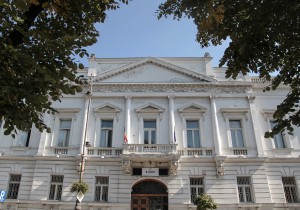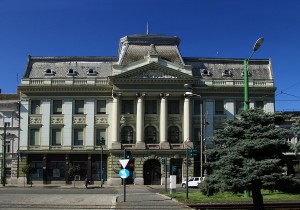The Palace of Justice was built in two stages, the first during 1892-1895 and the second, during 1940-1943. The Palace of Justice was and still is the most modern achievement of its kind in the region.
History
Large historical monument, the Palace of Justice of Arad was constructed in two stages, the first in the period 1892-1895, when the first 3 levels were built, and the second, during the period of 1940-1943, when side wings were annexed tot the building and the main body was supplemented with 5 floors.
Built in neoclassical style with baroque influences, the Palace currently houses the Court and the District Court of Prosecutors, along with the Center for Professional Development of the General Direction of Penitentiaries.
From 1996 to 2002, extensive repair works of the building, which has 13 court halls, 92 offices and other annex facilities totalling 21.344 sqm, were conducted. The building has always been the headquarters of Arad’s Court and continues to be up until today one of the most modern court buildings in the country.
Architecture
The entrance, constructed in eclectic style, is flanked by two columns in Doric style. The facade of the building facing Eminescu Park is dominated by the festive room’s large windows, with Neo-Baroque elements. The facade facing the River Mureş bears influences of the Italian Renaissance style.
Interesting facts
The bust of a Romanian Revolutionary Hero, Avram Iancu (1824-1872), was unveiled in front of the building.
Similar tourist attractions
The Administrative Palace of Arad is a significant work of eclectic architecture, currently hosting the City Hall of the municipality and the Institution of the Prefect of Arad County.
The building has hosted, over time, the Prefecture of Arad and the General Public Finances. Currently, it is named "Arad County Administration for Public Finances”.
The building of the National Bank was raised during 1909- 1910 and projected by architect József Hubert from Budapest. The central part of the edifice was made by the model of Greek temples.





